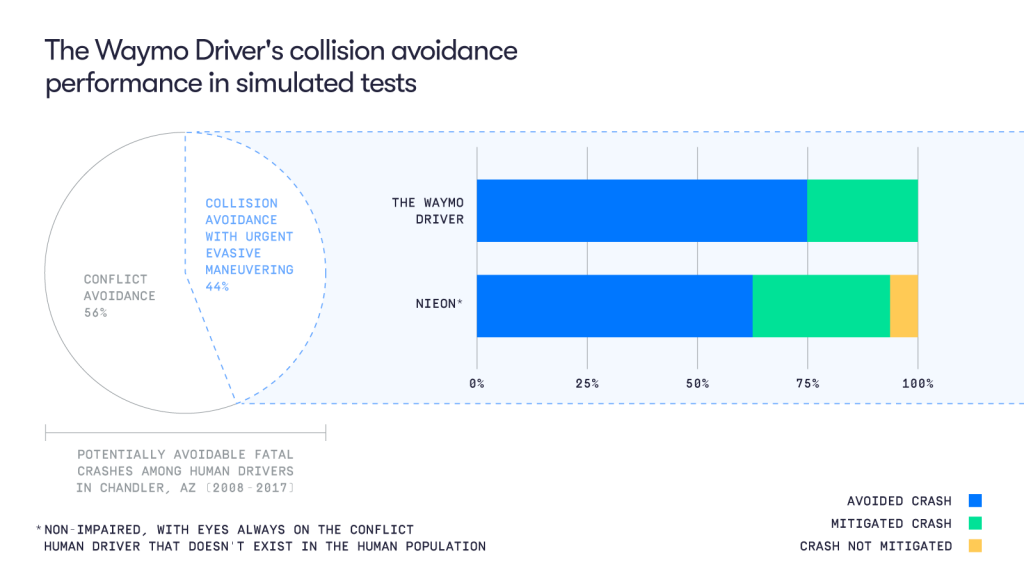
Google’s Waymo suggested its autonomous vehicles may be superhumanly more safe than even an ideal human driver who is always attentive and doesn’t get distracted or fatigued.
One of the main draws of autonomous driving technology is that it might significantly improve road safety. However, “there are still no universally accepted approaches for evaluating the safety of autonomous driving systems,” Waymo said in a blog post. “‘How safe is safe enough?’ and ‘How do autonomously driven vehicles perform compared to a human driver?’ are questions frequently asked across the industry.”
In 2021, Waymo analyzed how its autonomous driving system, the Waymo Driver, likely would have performed in 72 fatal crashes that occurred in Arizona’s Maricopa county, where Waymo is testing its autonomous vehicles, between 2008 and 2017. The company suggested the Waymo Driver could have avoided each accident in which it could have initiated the crash, and in scenarios where it had to respond to other vehicles, it completely avoided 82 percent of simulated crashes and mitigated the severity of 10 percent of the crashes, making no difference in the remaining 8 percent of crashes when the vehicle was struck from behind.
However, Waymo noted that it was uncertain what exact circumstances contributed to those crashes. These factors may have included driving while impaired, drowsy, or distracted by secondary tasks that may have been unique to each crash’s situation.
To eliminate these factors, Waymo developed a new model that examined how a non-impaired human with their eyes on the conflict (NIEON) would behave in the same exact crashes that the company analyzed last year. This consistently performing, always attentive driver that always keeps its gaze forward and is never sleepy or intoxicated, the kind of human errors that are the most common contributing factors in crashes, “simply does not exist in the human population,” the company noted.
Waymo compared the Waymo Driver with NIEON in the crashes it analyzed last year. In two new studies, Waymo found its autonomous vehicles consistently outperformed even this ideal version of a human driver.
“The data showed that the Waymo Driver outperformed the NIEON human driver model by avoiding more collisions and mitigating serious injury risk in simulated fatal crash scenarios,” Waymo noted.
The new research found that by using evasive maneuvering such as braking or swerving, the NIEON model may have prevented 62.5 percent of these past crashes and reduced 84 percent of their serious injury risk. However, the Waymo Driver was even more effective, as it avoided 75 percent of these collisions and reduced 93 percent of serious injury risk.
“We hope by sharing these methodologies to encourage discussions about safety metrics across the autonomous driving industry, and to provide yet another way to help share and contextualize performance data around autonomous driving technology,” Waymo noted.

